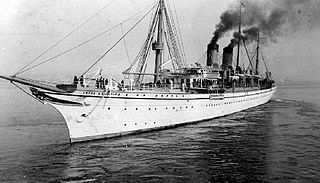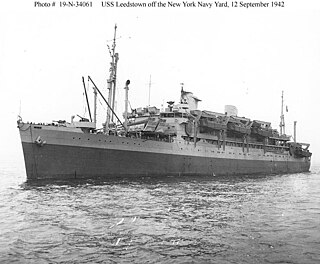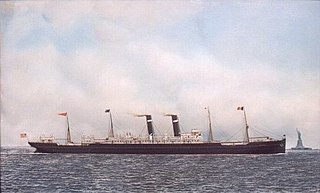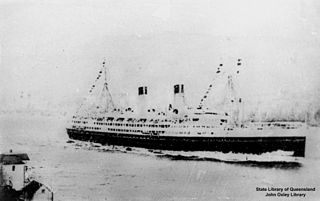
Panama Pacific Line was a subsidiary of International Mercantile Marine (IMM) established to carry passengers and freight between the US East and West Coasts via the Panama Canal. [1]

Panama Pacific Line was a subsidiary of International Mercantile Marine (IMM) established to carry passengers and freight between the US East and West Coasts via the Panama Canal. [1]

Although IMM had begun preparations for the intercoastal service as far back as 1911, [2] service began in May 1915 with the former Red Star Line (another IMM subsidiary line) ships Kroonland and Finland. [1] [3] When landslides in September 1915 closed the canal for an extended time, Kroonland and Finland were reassigned to the IMM's American Line. [4] The outbreak of World War I and its strain on international shipping caused the intercoastal service to be suspended.

In 1923 Kroonland and Finland were returned to the reinstated intercoastal route along with the American Line passenger steamer Manchuria. [5] [6] Manchuria's sister ship Mongolia supplanted Kroonland on the route in 1925. [7]
Three ships with steam turbo generators and turbo-electric transmission — California, Virginia and Pennsylvania — came into service in 1928–29, replacing all the other ships on the intercoastal service. These three newest ships included a drive-on service for passengers' automobiles, which allowed passengers to disembark with their cars at ports of call, such as Havana, a stop added in the early 1930s. [8]
In 1936 California, docked at San Pedro, California, was the setting for the SS California strike, which contributed to the demise of the International Seamen's Union and the creation of the National Maritime Union.
In June 1937 the United States Congress withdrew all maritime mail subsidies, which by then included a total of $450,000 per year to Panama Pacific for its three liners. [9] At the beginning of March 1938 the Panama Canal tolls were revised, increasing Panama Pacific's costs by $37,000 per year. [9] As a result of these cost increases and continuing labor difficulties, Panama Pacific ended its New York – California service and took all three liners out of service. [9] California was the last to leave service, joining Pennsylvania and Virginia in New York at the beginning of May 1938. [9] The United States Maritime Commission took over the three liners and transferred them to Moore-McCormack Lines to start a New York — River Plate service under Franklin D. Roosevelt's Good Neighbor policy.

The International Mercantile Marine Company, originally the International Navigation Company, was a trust formed in the early twentieth century as an attempt by J.P. Morgan to monopolize the shipping trade.

American Export-Isbrandtsen Lines, New York, was the leading US-flag shipping company between the U.S. east coast and the Mediterranean from 1919 to 1977, offering both cargo ship and passenger ship services, until it declared bankruptcy and was acquired by Farrell Lines of New York.

The American Line was a shipping company that operated independently from 1871 until 1932, when it was absorbed into the United States Lines.

SS Mongolia was a 13,369-ton passenger-and-cargo liner originally built for Pacific Mail Steamship Company in 1904. She later sailed as USS Mongolia (ID-1615) for the U.S. Navy, as SS President Fillmore for the Dollar Line and as SS Panamanian for Cia Transatlantica Centroamericano.

Queen of the Pacific is a name or nickname of ships and places associated with the Pacific Ocean, the largest of Earth's oceans.

RMS Sylvania was an ocean liner built in 1957 by John Brown & Co (Clydebank), in Glasgow, for the United Kingdom-based shipping company Cunard Line. She was the last Cunard Line vessel built specifically for transatlantic crossings. The ship was later heavily rebuilt as a cruise ship, and sailed under the names SS Fairwind, SS Sitmar Fairwind, SS Dawn Princess and SS Albatros before being scrapped in 2004. She was renamed SS Genoa for her last voyage.

USS Leedstown (AP-73), built as the Grace Line passenger and cargo ocean liner SS Santa Lucia, served as a United States Navy amphibious assault ship in World War II. The ship had first been turned over to the War Shipping Administration (WSA) and operated by Grace Line as the WSA agent from February to August 1942 in the Pacific. In August the ship, at New York, was turned over to the Navy under sub-bareboat charter from WSA. She was sunk 9 November 1942 off the Algerian coast by a German submarine after German bombers caused damage the day before.

SS Lurline was the third Matson Lines vessel to hold that name and the last of four fast and luxurious ocean liners that Matson built for the Hawaii and Australasia runs from the West Coast of the United States. Lurline's sister ships were SS Malolo, SS Mariposa and SS Monterey. Lurline served as a troopship in World War II operated by War Shipping Administration agents serving Army troop transport requirements. Bought by the Chandris Lines in 1963 as the RHMS Ellinis the ship became one of the most important luxury cruise ships on the Australian and New Zealand services. She operated in Australasia and Oceania until 1980.

SS California was the World's first major ocean liner built with turbo-electric propulsion. When launched in 1927 she was also the largest merchant ship yet built in the US, although she was a modest size compared with the biggest European liners of her era.

SS Finland was an American-flagged ocean liner built in 1902 for the Red Star Line. During World War I she served as a transport for the United States Navy named USS Finland (ID-4543). Before her Navy service in 1917, she was also USAT Finland for the United States Army.

SS Kroonland was an ocean liner for International Mercantile Marine (IMM) from her launch in 1902 until she was scrapped in 1927. Kroonland was the sister ship of Finland and a near sister ship of Vaderland and Zeeland of the same company. Kroonland sailed for IMM's Red Star Line for 15 years, and also sailed for IMM's American Line and Panama Pacific Line. During World War I, the ship served as United States Army transport USAT Kroonland through April 1918, and as the Navy auxiliary USS Kroonland (ID-1541) from April 1918 to October 1919.

SS La Touraine was an ocean liner that sailed for the Compagnie Générale Transatlantique from the 1890s to the 1920s. Built in France in 1891, she was primarily employed in transatlantic service on the North Atlantic. The liner was scrapped in Dunkirk in October 1923.

SS Vaderland was an ocean liner launched in July 1900 for the Red Star Line service between Antwerp and New York. During her passenger career, the ship initially sailed under British registry, but was re-registered in Antwerp in 1903. Vaderland was a sister ship to Zeeland and a near sister ship to Kroonland and Finland.

SS Zeeland was a British and Belgian ocean liner of the International Mercantile Marine Co. (IMM). She was a sister ship to Vaderland and a near sister ship to Kroonland and Finland of the same company. Although her name was Dutch, it was changed during World War I to the less German-sounding SS Northland. She served for a time as a British troop ship under the name HMT Northland. Reverting to Zeeland after the war, the ship was renamed SS Minnesota late in her career. Zeeland sailed primarily for IMM's Red Star Line for most of her early career, but also sailed under charter for the White Star Line, the International Navigation Company, the American Line, and the Atlantic Transport Line, all IMM subsidiary lines. The pursers safe survived the scrapyard at Inverkeithing and after residing in a wardrobe for 80 years is currently on display in a local private home.

SS Manchuria was a passenger and cargo liner launched 1903 for the San Francisco-trans Pacific service of the Pacific Mail Steamship Company. During World War I the ship was commissioned 25 April 1918–11 September 1919 for United States Navy service as USS Manchuria (ID-1633). After return to civilian service the ship was acquired by the Dollar Steamship Line in 1928 until that line suffered financial difficulties in 1938 and ownership of Manchuria was taken over by the United States Maritime Commission which chartered the ship to American President Lines which operated her as President Johnson. During World War II she operated as a War Shipping Administration transport with American President Lines its agent allocated to United States Army requirements. After World War II, she was returned to American President Lines, sold and renamed Santa Cruz. The liner was scrapped in Italy in 1952.

SS Iberia was an ocean liner completed in 1954 for the Peninsular and Oriental Steam Navigation Company (P&O). Along with her fleetmates Himalaya, Arcadia and Chusan, Iberia mainly provided passenger service between the United Kingdom and Australasia.

The first RMS Saxonia was a passenger ship of the British Cunard Line. Between 1900 and 1925, Saxonia operated on North Atlantic and Mediterranean passenger routes, and she saw military service during World War I (1914–1918).

MV Aorangi was a transpacific ocean liner and refrigerated cargo ship. She was launched in 1924 in Scotland and scrapped in 1953. Her regular route was between Sydney and Vancouver via Auckland, Suva and Honolulu.

George G. Sharp, Inc. is a marine design and naval architecture firm established in 1920 in New York City by George Gillies Sharp, former Chief Surveyor of the American Bureau of Shipping. The firm started with the design of excursion steamboats on the Delaware and Hudson rivers, then moved into oceangoing passenger and cargo shipping. From 1934 Sharp designed a standardized series of merchant ships for the U.S. Department of Commerce. During World War II Sharp designed the standardized Victory ship, of which 534 were built, and 50 escort carriers.

SS Brazil was a US turbo-electric ocean liner. She was completed in 1928 as Virginia, and refitted and renamed Brazil in 1938. From 1942 to 1946 she was the War Shipping Administration operated troopship Brazil. She was laid up in 1958 and scrapped in 1964.